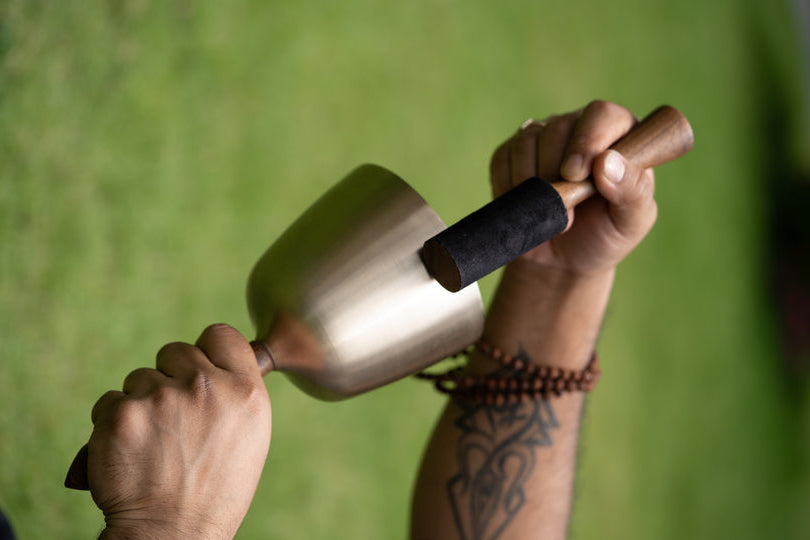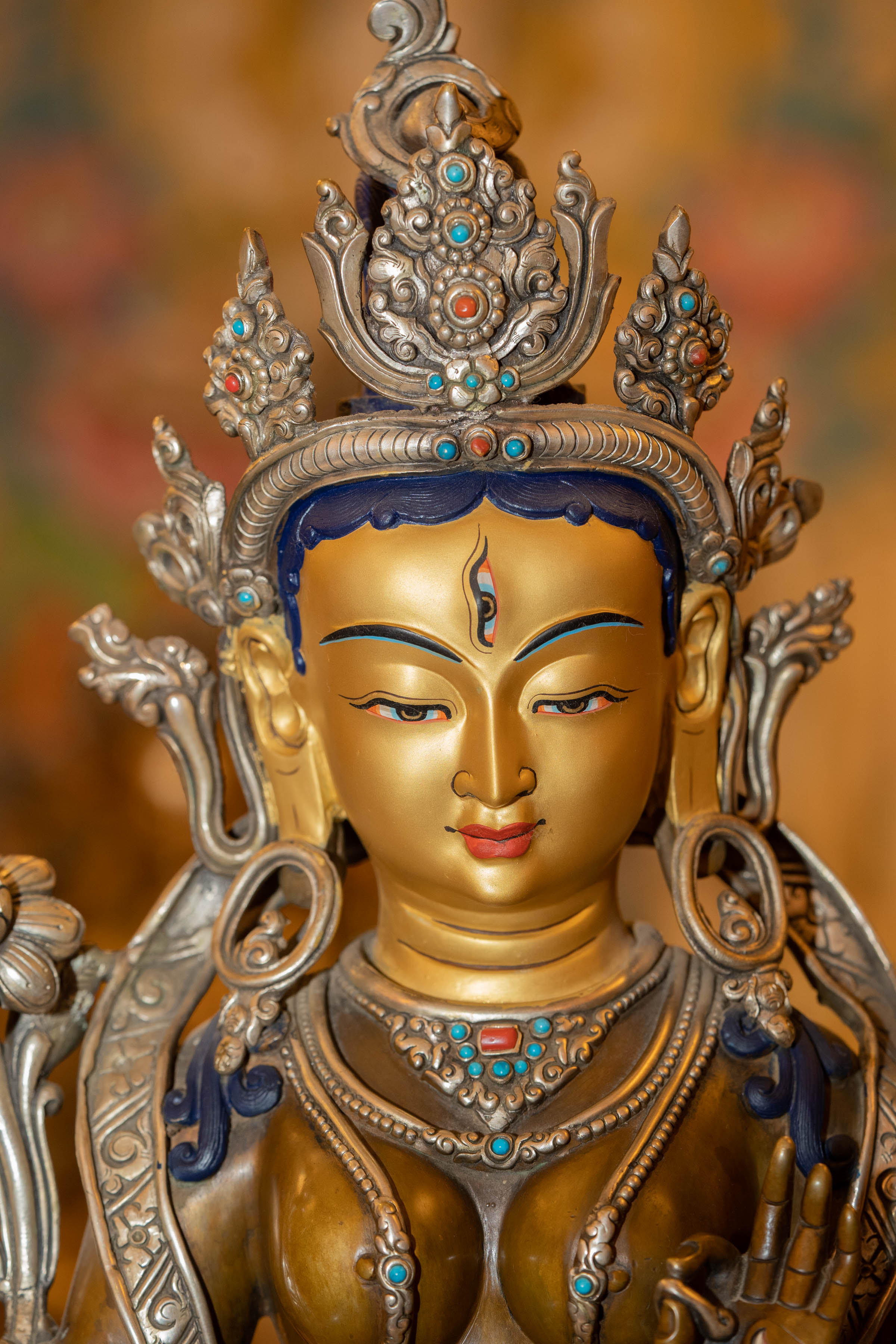There is evidence that the metal bell originated in China, with the earliest known Shang dynasty (16th-11th centuries BCE) bells being among the oldest bronze objects found in China. They possibly originated from grain scoops of standard capacity (the word chung or grain measure is used in many ancient texts to mean a bell). Early bronze standing bells called nao embody some of the highest technical skills of Chinese civilisation and represent the earliest known form of chiming bell. Taking the shape of hollow-stemmed goblets with a curved rim, nao were made in sizes varying between 8 and 50 cm. They were mounted on their stem, with rim uppermost, and struck on the outside with a mallet. Nao from southern China were produced as single specimens, while in the north they were produced in chimed sets of three. Some were constructed such that striking at two different points would produce different ringing tones.
Bronze bells of substantial size were being cast in China at least as early as the 13th-11th centuries BCE, and the spread of Buddhism in the 2nd-7th centuries CE gave new impetus to the production of large bells for use in rituals. Chinese tradition was, however, unique in that bells were made not only from Bronze but also from cast-iron.
Some writers suggest that the modern singing bowl developed from bowls originally used for food; but others consider that to be unlikely, pointing out that there would be no reason for food bowls to be manufactured with thick rims and with great attention paid to their acoustic properties.
Although it is sometimes stated that 'Tibetan singing bowls' date back to a pre-Buddhist, shamanic Bon-Po tradition, the manufacture and use of bowls specifically for the purpose of 'singing' (as opposed to standing bells/bowls that are intended to be struck) is believed to be a modern phenomenon. The historical records and accounts of the music of Tibet are silent about singing bowls. Such bowls are not mentioned by Perceval Landon (a visitor in 1903-1904) in his notes on Tibetan music, nor by any other visitor. Likewise, though ringing and clanging sounds were noted by missionaries interested in traditional Tibetan healing practices, they make no mention of singing bowls. The objects often now referred to as 'Tibetan singing bowls', and marketed as Tibetan ritual instruments, have been called "dharma products" that in fact come from northern India or Nepal, and are neither Tibetan nor ritual in origin. But also there is story said that Singing bowls, which became identified with Tibet, were actually found there by the Buddhists who arrived after Gautama Buddha's departure in 600 BCE. At that time the singing bowls were shrouded in mystery and sounded primarily for religious and magical purposes by the Bon Po Shamans. It is believed that these shamanic practitioners were the sacred metallurgists, and included 'recitation of mantric formulas' (the actual meaning of Bon).
These ancient artisans of earth magic are thought to have been the ones who originated the method of rimming the bowls with a wooden wand for purposes in their ceremonies. The striking style of sounding in Buddhist tradition, between silent meditations, or upon entering and leaving a temple may also have been used. Although much information about shamanic formulas with the singing bowls seems to have been lost, destroyed, or to this day kept well hidden, their utilitarian use as begging bowl, eating bowl and sacrificial bowl continues to last throughout the cultures.
There is a theory that from the Bronze Age on (3500 BCE) small groups of nomadic alchemists and metallurgists traversed the Trans-Himalayan peaks and countries. They were the mysterious ones who knew how to build foundries, how to smelt bronze, in correct sequence, the metals related to the 7 Sacred Planets of the Solar System, and how to tap-tune the bronze until it revealed its most resonant release of tone. Sometimes, they incorporated 9 or more different metals, common to the times and regions in which they traveled.



